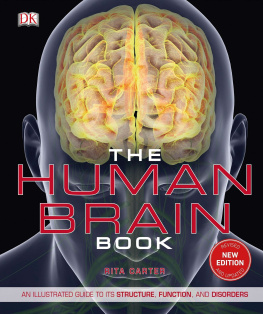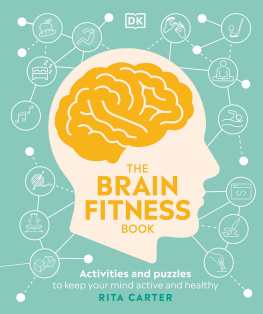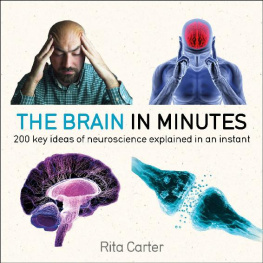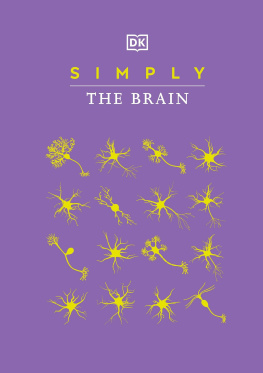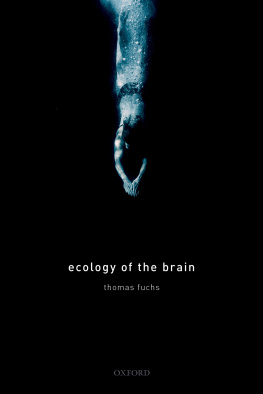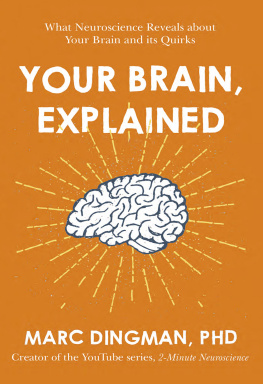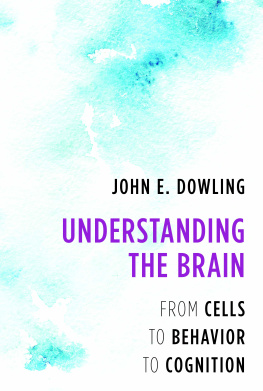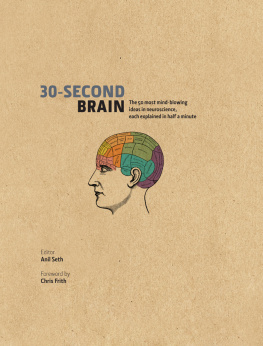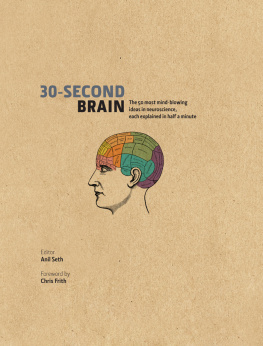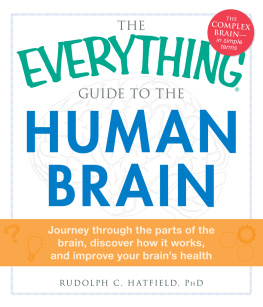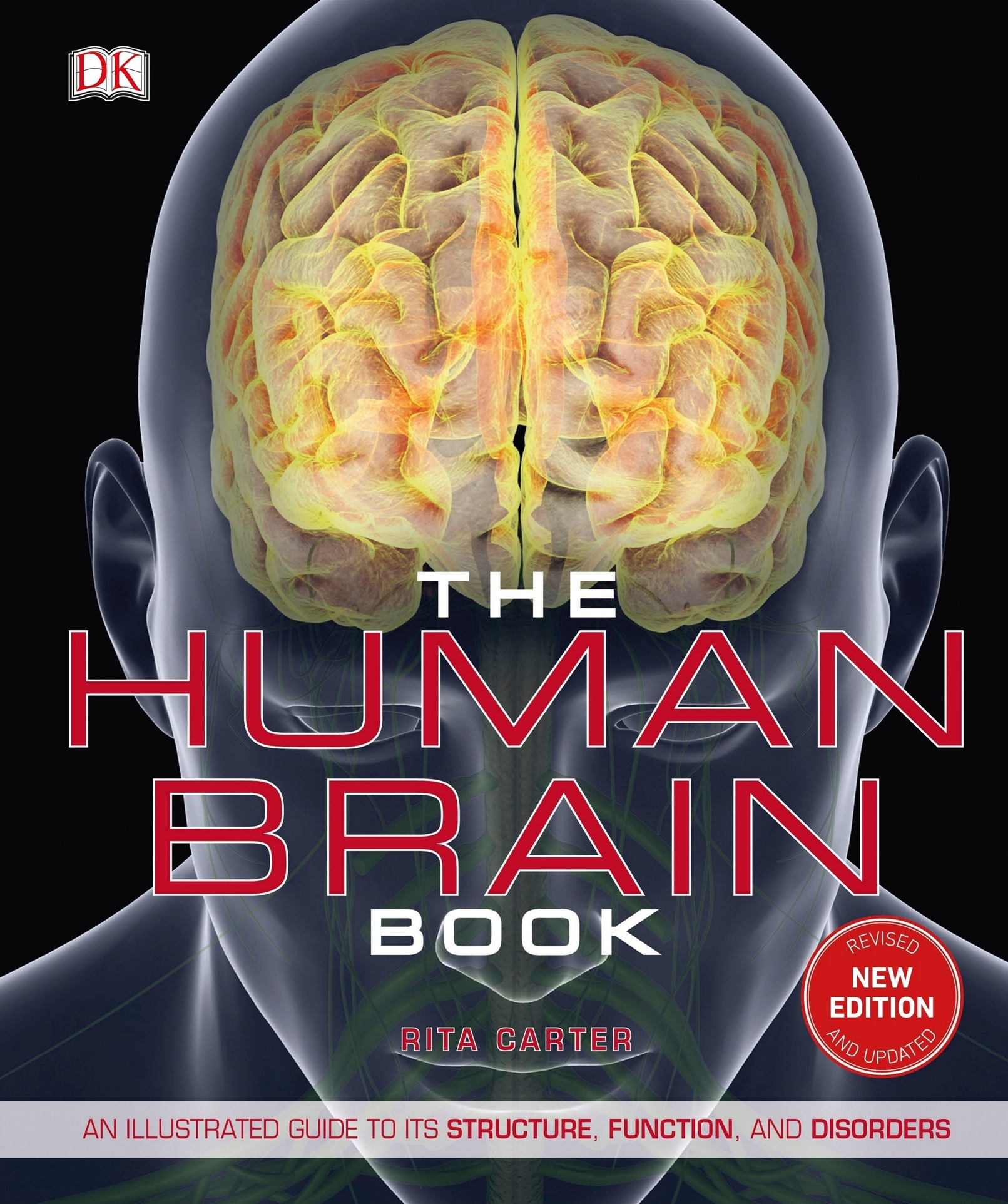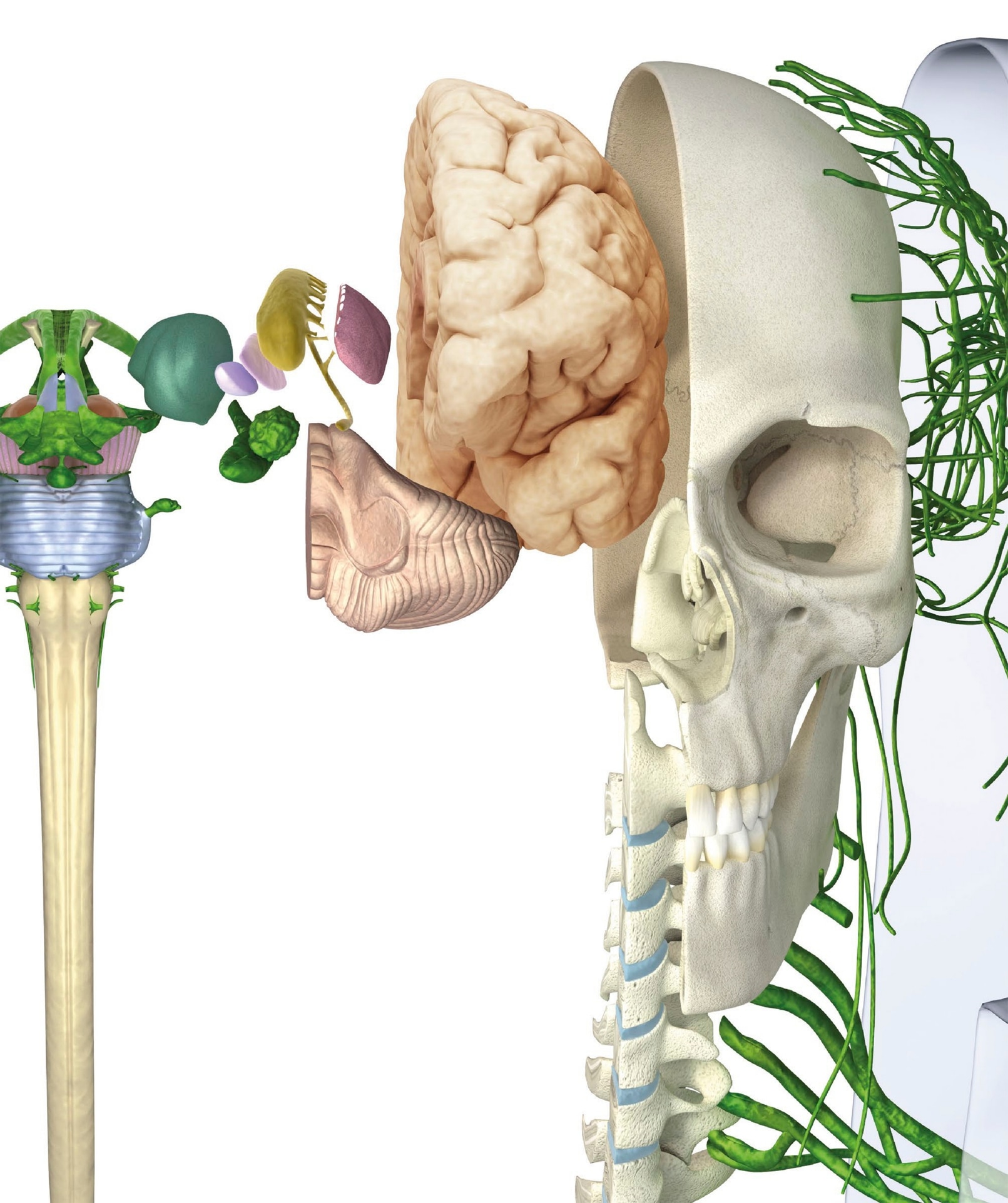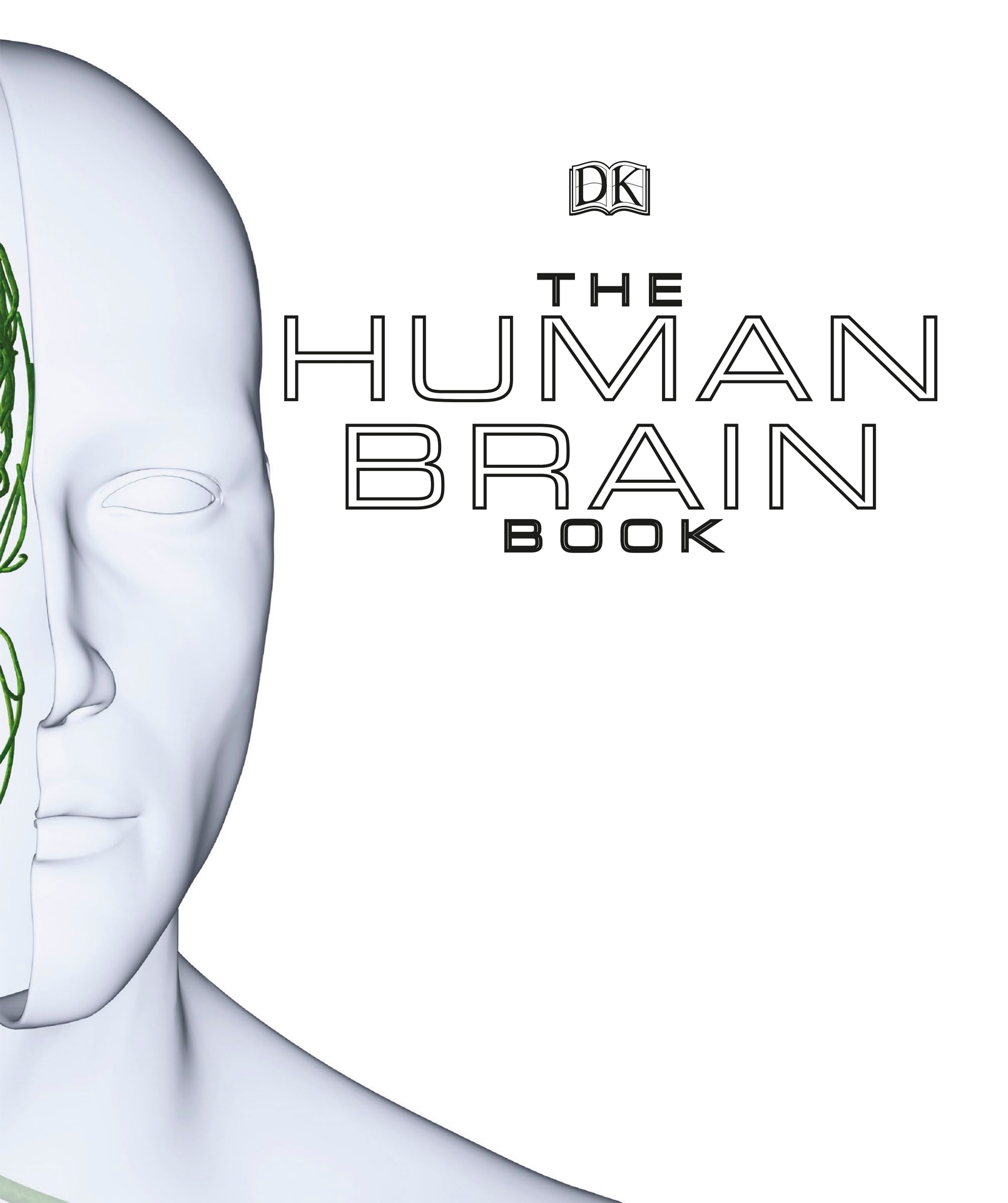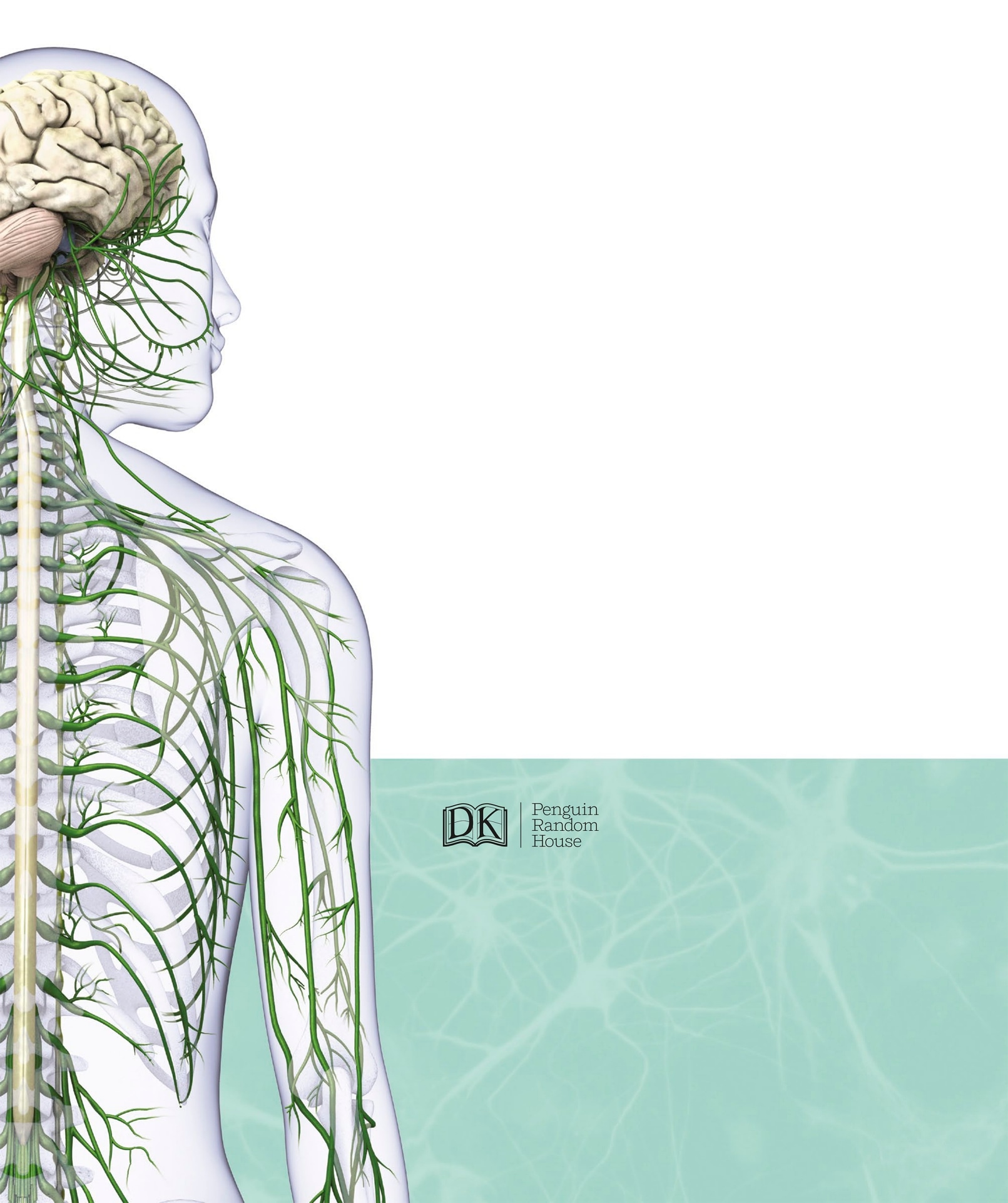
NO ORDINARY ORGAN INVESTIGA TING THE BRAIN LANDMARKS IN NEUROSCIENCE SCANNING THE BRAIN A JOURNEY THROUGH THE BRAIN THE BRAIN AND THE BODY BRAIN FUNCTIONS THE NERVOUS SYSTEM THE BRAIN AND THE NERVOUS SYSTEM BRAIN SIZE, ENERGY USE, AND PROTECTION EVOLUTION BRAIN ANA TOMY BRAIN STRUCTURES BRAIN ZONES AND P AR TITIONS THE NUCLEI OF THE BRAIN THE THALAMUS, HYPOTHALAMUS, AND PITUIT AR Y GLAND THE BRAIN STEM AND CEREBELLUM THE LIMBIC SYSTEM THE CEREBRAL CORTEX BRAIN CELLS NERVE IMPULSES BRAIN MAPPING AND SIMULA TION THE SENSES HOW WE SENSE THE WORLD THE EYE THE VISUAL CORTEX VISUAL P ATH WAY S VISUAL PERCEPTION SEEING THE EAR MAKING SENSE OF SOUND HEARING SMELL PERCEIVING SMELL TAS TE TOUCH THE SIXTH SENSE PAI N SIGNALS EXPERIENCING P AIN
CONTENTS
THIRD EDITION DK DELHI SENIOR EDITOR Rupa Rao ART EDITOR Sonakshi Singh MANAGING EDITOR Rohan Sinha MANAGING ART EDITOR Sudakshina Basu DTP DESIGNER Bimlesh Ti wary PICTURE RESEARCHER Sumedha Chopra PICTURE RESEARCH MANAGER T aiyaba Khatoon PREPRODUCTION MANAGER Balwant Singh PRODUCTION MANAGER Pa nkaj Sharma DK LONDON SENIOR EDITOR P eter F rances PROJECT EDITOR Ruth ORourke-Jones PROJECT ART EDITOR F rancis W ong US EDITOR Jennette ElNaggar US EXECUTIVE EDITOR Lori Cates Hand MANAGING EDITOR A ngeles Gavira Guerrero MANAGING ART EDITOR Michael Duffy JACKET DESIGN DEVELOPMENT MANAGER Sophia MTT PRODUCER, PREPRODUCTION Gillian Reid SENIOR PRODUCER Meskerem Berhane ASSOCIA TE PUBLISHER Liz Wheeler ART DIRECTOR Karen Self DESIGN DIRECTOR Phil Ormerod PUBLISHING DIRECTOR Jonathan Metcalf
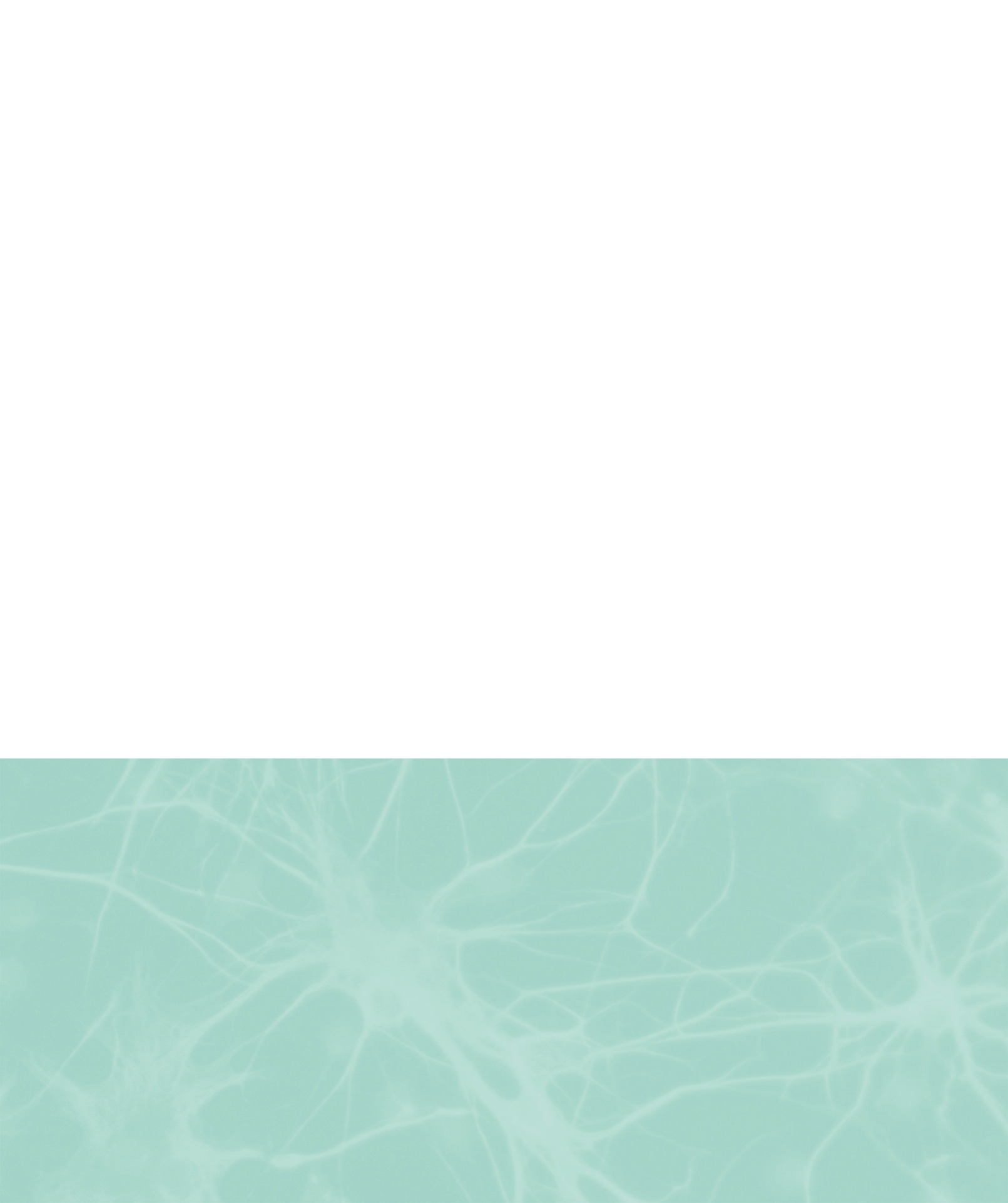
MOVEMENT AND CONTROL REGULAT ION THE NEUROENDOCRINE SYSTEM PLANNING A MOVEMENT EXECUTING A MOVEMENT UNCONSCIOUS ACTION MIRROR NEURONS EMOTIONS AND FEELINGS THE EMOTIONAL BRAIN CONSCIOUS EMOTION DESIRE AND REWARD THE SOCIAL BRAIN SEX, LOVE, AND SUR VIV AL EXPRESSION THE SELF AND OTHERS THE MORAL BRAIN LANGUAGE AND COMMUNICA TION GESTURES AND BODY LANGUAGE THE ORIGINS OF LANGUAGE THE LANGUAGE AREAS A CONVERSAT ION READING AND WRITING MEMORY THE PRINCIPLES OF MEMORY THE MEMORY WEB LAY ING DOWN A MEMORY RECALL AND RECOGNITION UNUSUAL MEMORY THINKING INTELLIGENCE CREAT IVITY AND HUMOR BELIEF AND SUPERSTITION ILLUSIONS CONSCIOUSNESS WHAT IS CONSCIOUSNESS? LOCAT ING CONSCIOUSNESS ATT ENTION AND CONSCIOUSNESS THE IDLING BRAIN ALT ERING CONSCIOUSNESS SLEEP AND DREAMS TIME THE SELF AND CONSCIOUSNESS THE INDIVIDUAL BRAIN NAT URE AND NURTURE INFLUENCING THE BRAIN PERSONALITY BRAIN MONITORING AND STIMULA TION STRANGE BRAINS DEVELOPMENT AND AGING THE INFA NT BRAIN CHILDHOOD AND ADOLESCENCE THE ADUL T BRAIN THE AGING BRAIN THE BRAIN OF THE FUTURE DISEASES AND DISORDERS THE DISORDERED BRAIN DIRECTORY OF DISORDERS GLOSSARY INDEX ACKNOWLEDGMENTS SENIOR EDITOR P eter F rances SENIOR ART EDITOR Maxine Lea PROJECT EDITORS Nathan Joyce, Ruth ORourke, Miezan van Zyl EDITORS Salima Hirani, Katie John, Rebecca W arren PROJECT ART EDITORS A lison Gardner , Sin Thomas, F rancis W ong DESIGNER Riccie Janus EDITORIAL ASSIST ANT Elizabeth Munsey INDEXER Hilary Bird PROOFREADER P olly Boyd PICTURE RESEARCHER Liz Moore JACKET DESIGNER Duncan T urner SENIOR PRODUCTION CONTROLLER Inderjit Bhullar PRODUCTION EDITOR T ony Phipps CREAT IVE TECHNICAL SUPPORT Adam Brackenbury , John Goldsmid MANAGING EDITOR Sarah Larter SENIOR MANAGING ART EDITOR Phil Ormerod PUBLISHING MANAGER Liz Wheeler REFERENCE PUBLISHER Jonathan Metcalf ART DIRECTOR Bryn W alls ILLUSTRA TORS Medi-Mation, P eter Bull Art Studio This American Edition, 2019 First American Edition, 2009 Published in the United States by DK Publishing 345 Hudson Street, New Y ork, New Y ork 10014 Copyright 2009, 2014, 2019 Dorling Kindersley Limited DK, a Division of P enguin Random House LLC 19 20 21 22 23 10 9 8 7 6 5 4 3 2 1 001306003Jan/2019 All rights reserved. With out limiting the rights under the copyright reserved above, no part of this publication may be reproduced, stored in or introduced into a retrieval system, or transmitted, in any form, or by any means (electronic, mechanical, FIRST EDITION photocopying, recording, or otherwise), without the prior written permission of the copyright owner . Published in Great Britain by Dorling Kindersley Limited. A catalog record for this book is available from the Library of Congress. ISBN 978-1-4654-7954-9 DK books are available at special discounts when purchased in bulk for sales promotions, premiums, fund-raising, or educational use. F or details, contact: DK Publishing Special Markets, 345 Hudson Street, New Y ork, New Y ork 10014 SpecialSales@dk.com The Human Brain Book provides information on a wide range of medical topics, and every effort has been made to ensure that the information in this book is accurate. The book is not a substitute for medical advice, however , and you are advised always to consult a doctor or other health professional on personal health matters. Printed in China A WORLD OF IDEAS: SEE ALL THERE IS TO KNOW www.dk .com
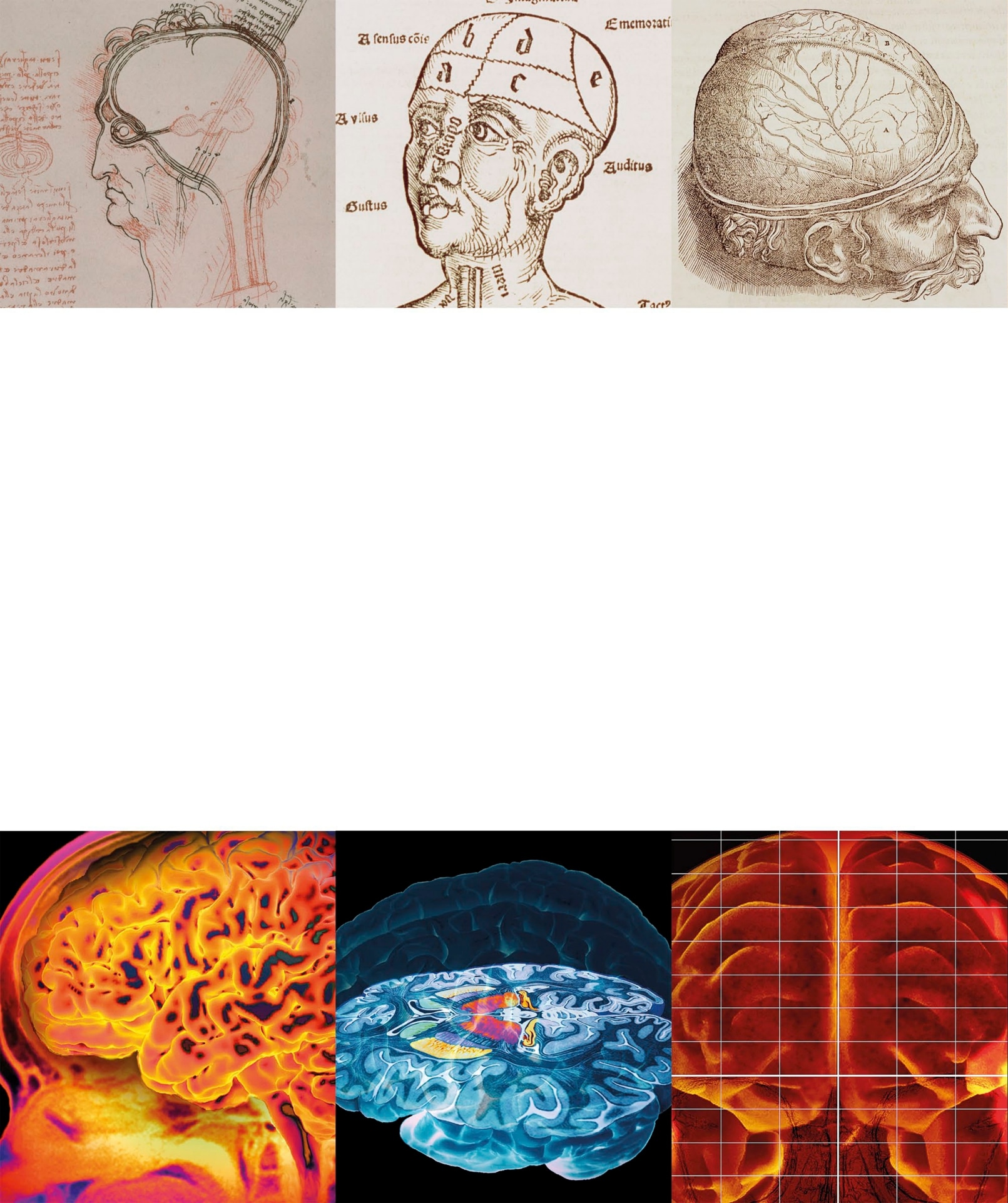
NO ORDINARY ORGAN The human brain is like nothing else. As organs go, it is not especially prepossessing3lb (1.4kg) or so of rounded, corrugated esh with a consistency somewhere between jelly and cold butter . It doesn t expand and shrink like the lungs, pump like the heart, or secrete visible material like the bladder . If you sliced off the top of someone s head and peered inside, you wouldnt see much happening at all. SEAT OF CONSCIOUSNESS Given this, it is perhaps not surprising that for centuries the contents of our skulls were regarded as relatively unimportant. When they mummied their dead, the ancient Egyptians scooped out the brains and threw them away , yet carefully preserved the heart. The Ancient Greek philospher , Aristotle, thought the brain was a radiator for cooling the blood. Ren Descartes, the Fr ench scientist, gave it a little more respect, concluding that it was a sort of antenna by which the spirit might commune with the body . It is only now that the full wonder of the brain is being realized. T he most basic function of the brain is to keep the rest of the body alive. Among your brain s 100 billion neurons, some regulate your breathing, heartbeat, and blood pressure and others control hunger , thirst, sex drive, and sleep cycle. In addition to th is, the brain generates the emotions, perceptions, and thoughts th at guide your behavior . Then it directs and executes your actions. Fin ally , it is responsible for the conscious awareness of the mind itself. THE DYNAMIC BRAIN Until about 100 years ago, the only evidence that brain and mind were connected was obtained from natural experimentsaccidents in which head injuries created aberrations in their victims behavior . Dedicated physicians mapped out areas of the cerebral landscape by observing the subjects of such experiments while they were alive then matching their decits to the damaged areas of their brains. It was slow work because the scientists had to wa it for their subjects to die before they could look at the physiological ev idence. As a result, until the early 20th century , all that was known about the physical basis of the mind could have been contained in a single volume. S ince then, scientic and technological advances have fueled a neuroscientic revolution. P owerful microscopes made it possible to look in detail at the brain s intricate anatomy . A growing understanding of electricity allowed the dynamics of the brain to be recognized and then, with the advent of electroencephalography (EEG), to be observed and measured. Finally , the arrival of

